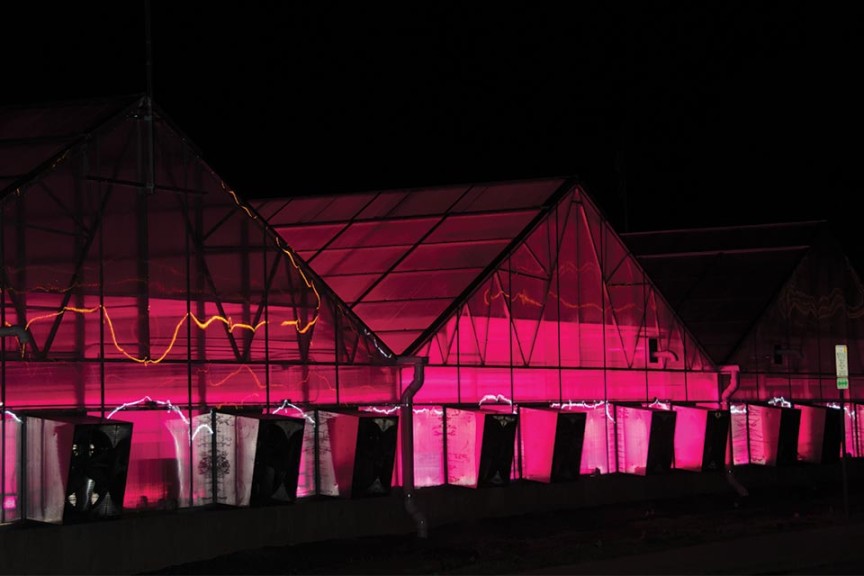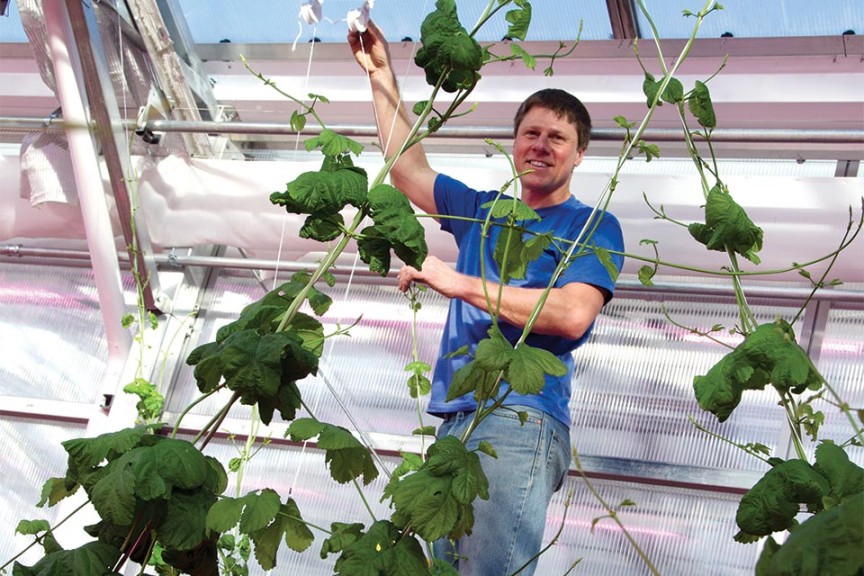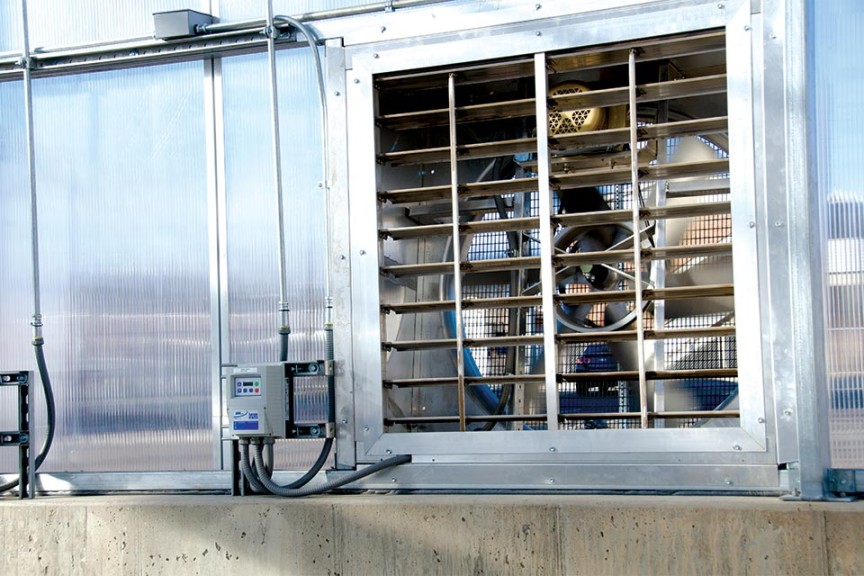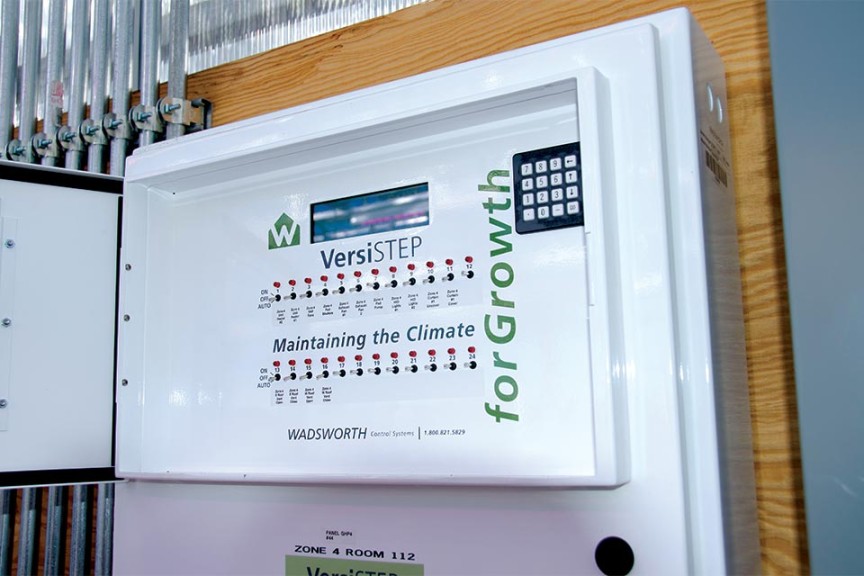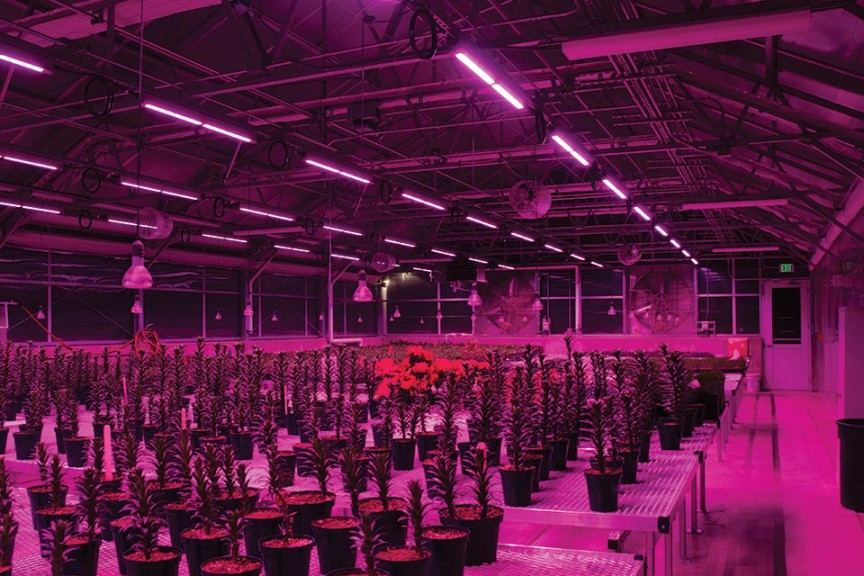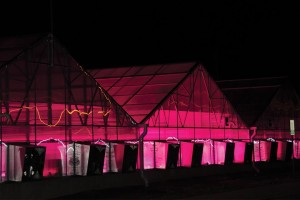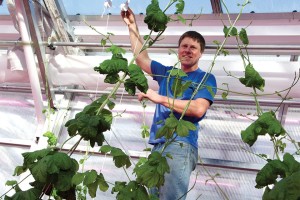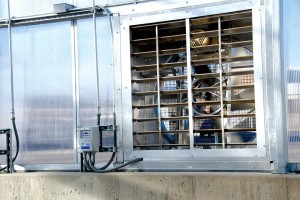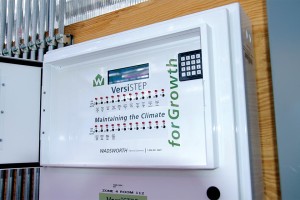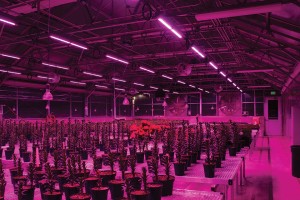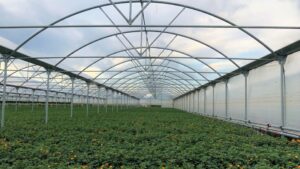New Colorado State University Greenhouse Showcases LED Technology
Colorado State University (CSU) has a new 21,000 square-foot, state-of-the-art greenhouse outfitted with advanced environmental control systems and modern LED lighting, thanks to a football stadium and Philips Lighting. After a decision to construct the university’s new football stadium on property that housed the 65-year-old W.D. Holley Plant Environmental Research Center, CSU provided the Horticulture and Landscape Architecture department with $7.5 million to build a new research greenhouse and teaching facility a few blocks away — the CSU Horticulture Center.
The greenhouse is a Nexus Vail model frame covered with ThermaGlas polycarbonate that has six bays connected by a ventilation corridor with a 20-foot-high gutter line. It has Ludvig Svensson retractable heat curtains and Wadsworth control vents. A Modine Effinity 93 natural gas unit takes care of heating, and American Coolair fan boxes wired as variable frequency drives provide cooling. All injectors are Dosatron, and Wadsworth Control Systems’ environmental controls take care of climate automation.
For hydroponic growing, one bay of the greenhouse will include six CropKing NFT8-25 trough units, while another area will house a traditional raft set up with 5- by 10-foot rafts. Three of the greenhouse bays will hold standard rolling-top benches from Nexus.
[blackoutgallery id=”130190″]
CSU And Philips Lighting Collaborate To Advance LED Research
Because of a Master Research and Development Agreement between Philips Lighting and CSU, the greenhouse is a showcase of cutting-edge LED technology. Steven Newman, Greenhouse Crops Extension Specialist and Professor of Floriculture at CSU, says some of the technology is new to greenhouse growers, like the latest GreenPower LED Toplighting System fresh out of Philips’ Eindhoven Research and Development Center in the Netherlands. The greenhouse also has flowering LED lamps and vertical interlighting for high-wire vegetables, along with two Conviron plant growth chambers fitted with LED lighting.
“The beauty of the Philips GreenPower LED lighting is that the technology is modular,” Newman says. “Everything is plug and play, so it gives us the flexibility to do an upgrade or change the system to meet our research needs.”
The CSU greenhouse is to be one of Philips’ demonstration sites for North America, Newman says, because it is a great way for its clients to see LEDs working in a real greenhouse versus in a showroom. A long-range research and development partnership allows CSU and Philips to work together on research and focused cultivation studies that advance LED lighting techniques for the production of ornamentals, vegetables, and hops, in addition to other horticultural activities that research how to enhance plant quality and characteristics.
CSU faculty will use the greenhouse for research, teaching, and demonstration purposes. A primary focus will be on ornamental plug production and reducing plant bench time after transplanting, with vegetable research coming later. Bill Bauerle, an ecophysiology and plant stress physiology Professor at CSU, is studying hops production using LED interlighting.
Newman says he plans to use Philips’ LED bloom lighting for research with flowering perennials, to see if he can bring them into bloom earlier, which could help improve spring sales at retail. CSU plans to conduct LED research on warehouse growing in the future, which aligns well with Philips’ ongoing research on vertical city farming to provide LED light recipes that improve crop quality and yields.





